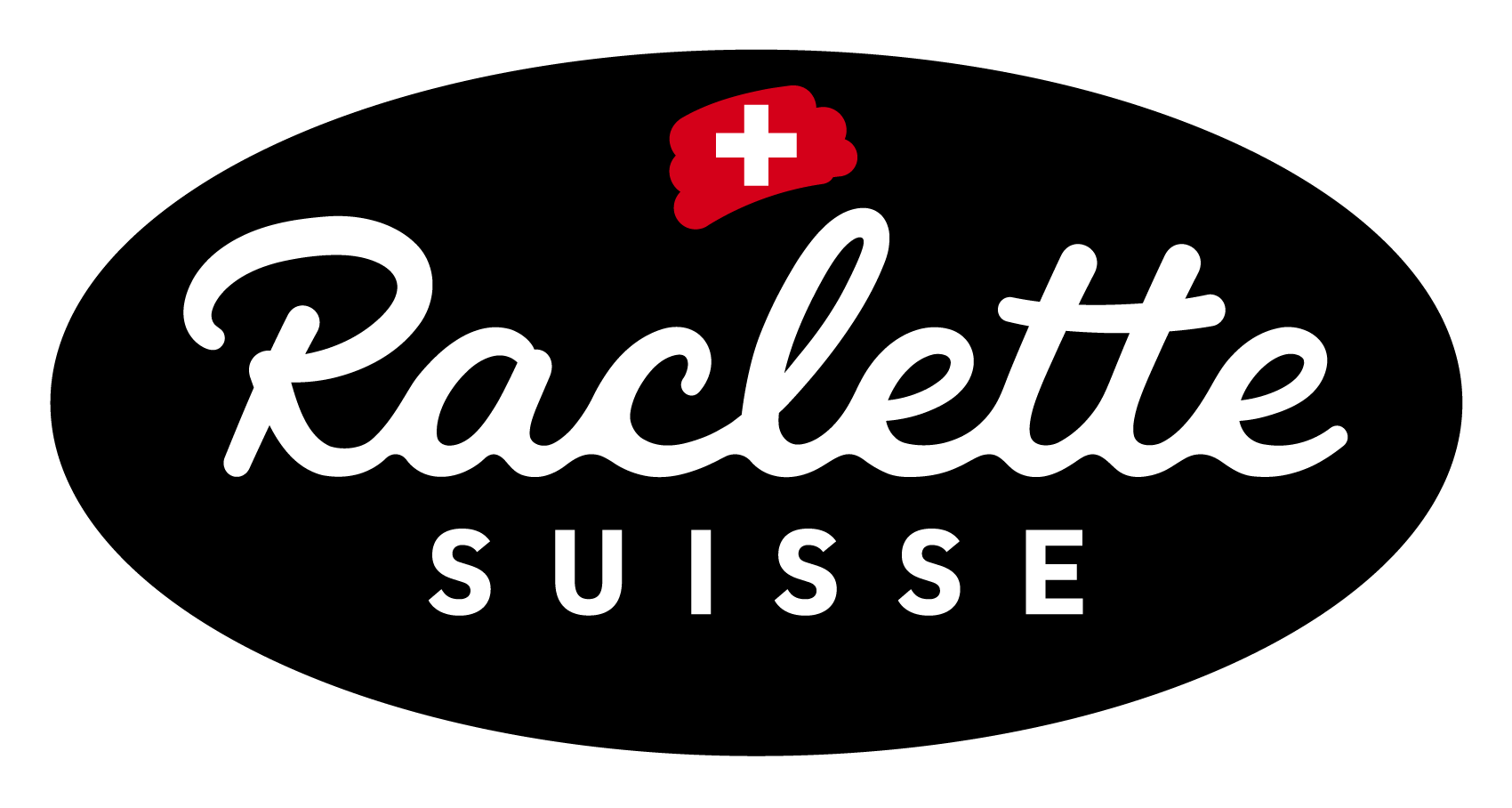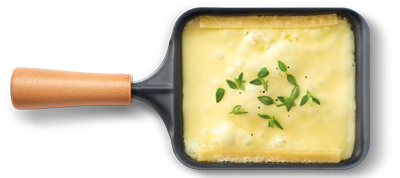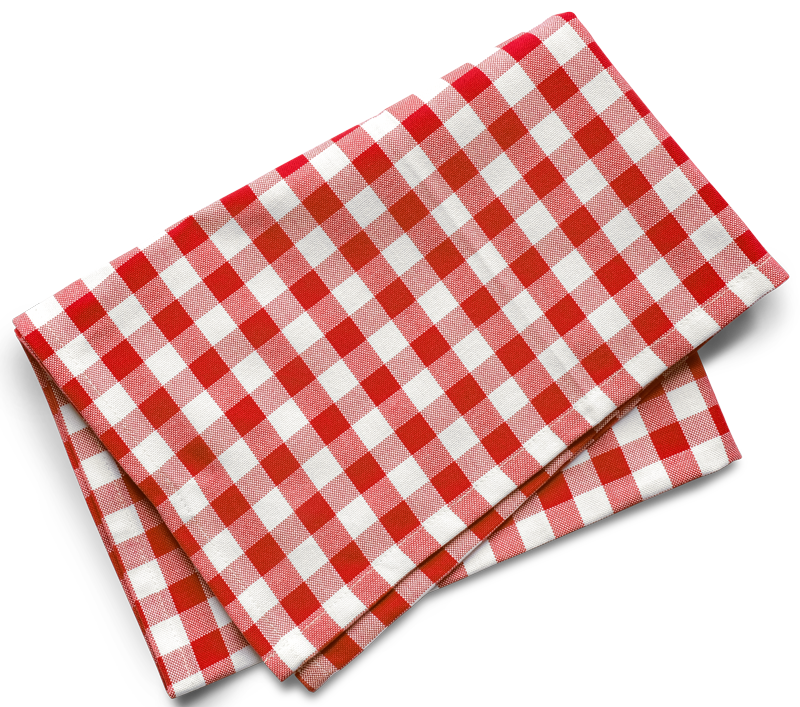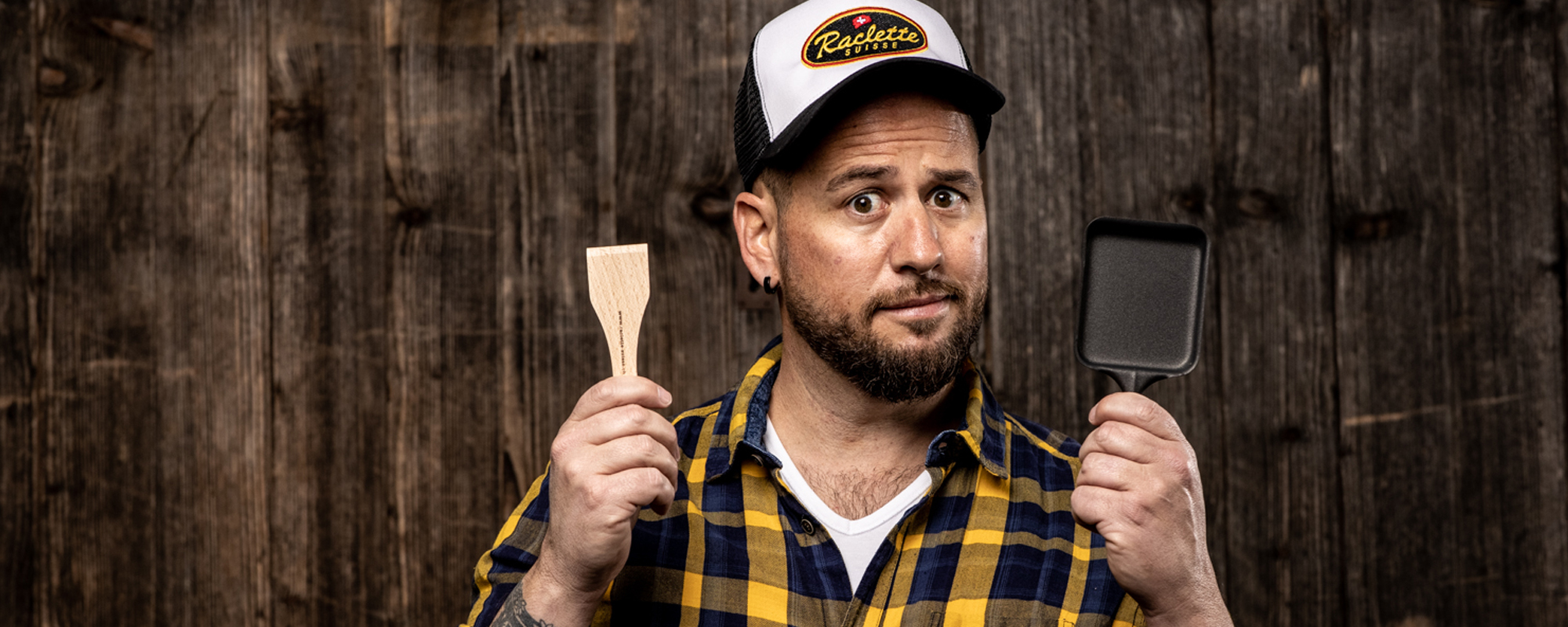
Manufacturing
Perhaps you have already asked yourself during a cosy raclette with family or friends why this raclette cheese actually tastes so incredibly good?
It’s also because raclette cheese was already being made in Switzerland in the Middle Ages on some of the alps. Every alpine dairyman who made raclette cheese had his own recipe and secret.
He only entrusted it to his children, who continued to tinker with it and improve it. Then they passed it on to their descendants, who also developed the recipe with great passion. And then they passed it on again to their descendants.
This went on and on until today. Until this long tradition evolved into a proud artisan craft that, with lots of skill, knowledge, experience and precision, produces the raclette cheese that we all know and appreciate today: because it tastes incomparably good.
Read here how Raclette Suisse is made in five steps.
See here how TRAUFFER helps to make raclette cheese.
1. It starts with good, healthy Swiss milk.
The Swiss milk is first stirred and warmed up to 32°C. At the same time rennet and selected bacterial cultures are added. It is then left to rest for half an hour. During this time, the mass coagulates and acquires a thick consistency, the so-called jelly.
Read more about milk curdling here.
One reason our raclette cheese is so good is that it is made from good Swiss cow’s milk. This is milk from cows that eat fresh, lush grass and herbs all day long in healthy air on green pastures. They eat about 80 kilograms in a day and give about 30 litres of milk in return.
Either raw or pasteurised milk is used to make raclette cheese. From 100 litres of milk, 10 kilos of cheese are made. And this is how:
First, the milk is heated to 32°C with constant stirring in a large kettle called a cheese maker. Bacterial cultures and rennet are added during this process.
Once the milk has warmed up, it is left to rest for 30 minutes. The natural ingredients added earlier coagulate the milk and give it a thick consistency. This gelatinous mass is called jelly.
The production of bacterial cultures is an art in itself, requiring a lot of experience and knowledge. Every producer has his own recipe, which he keeps to himself. Because these selected bacterial cultures, which are added to the milk, determine the aroma and taste of the cheese. They are also responsible for whether the cheese has many or few holes. And they are also vital for its meltability.
See here how TRAUFFER participates in the encapsulation process.
See here how bacteria cultures are explained to TRAUFFER.
2. Now the cheese harp comes into play.
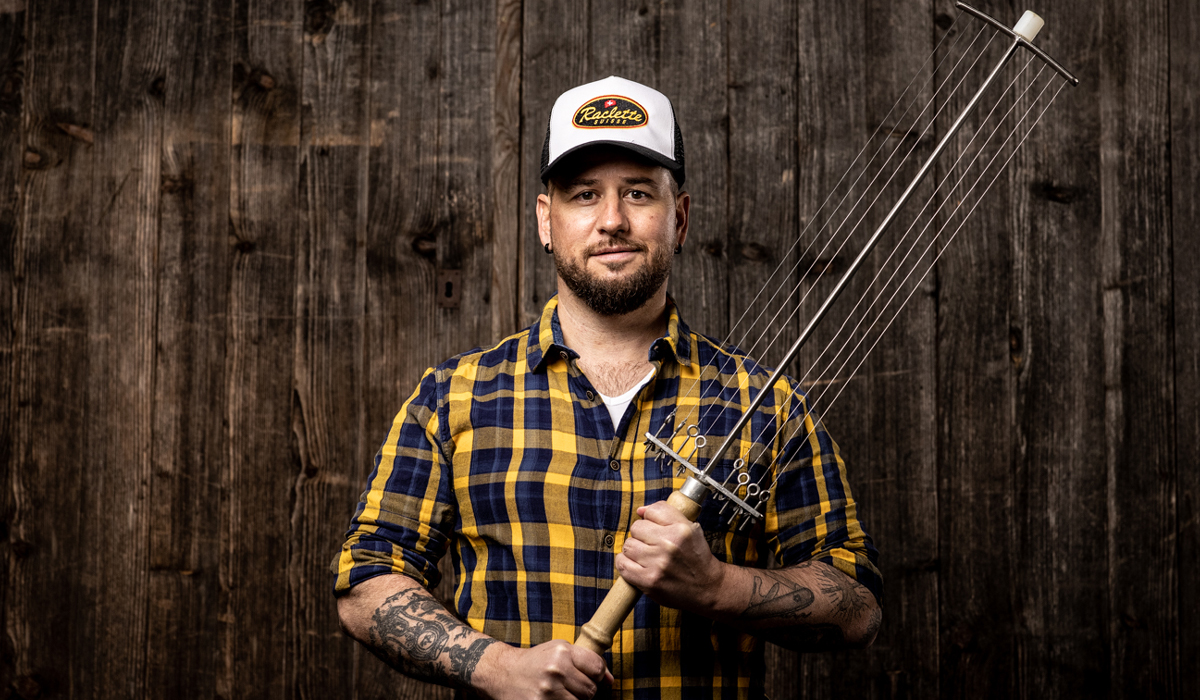
During the so-called pre-cheesemaking process, the thick jelly is stirred with the cheese harp and cut into fine cheese grains, the cheese curds, and crushed.
Read more about pre-cheesemaking here.
The thick cheese mass, the jelly, is now stirred with the cheese harp.
Since the cheese harp is strung with very fine, sharp wires, the cheese mass is cut into small grains when stirred.
We call these cheese grains the curds. The liquid part that remains is the whey.
Working with the cheese harp requires a lot of experience and sure instinct -because it also determines the hardness of the cheese. The higher the jelly is heated and the longer it is stirred with the cheese harp, the smaller and finer the cheese grains become and the harder the cheese.
See here how TRAUFFER assists with cheesemaking.
3. Off to the brine bath.
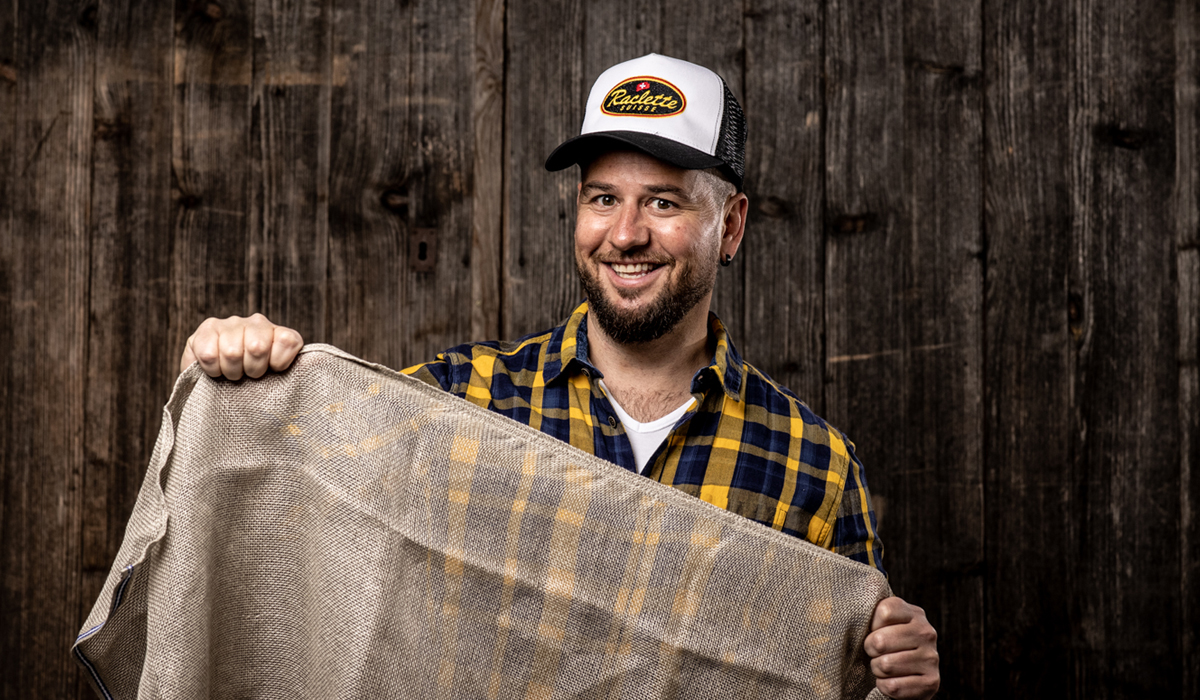
The curd is heated to around 42°C with constant stirring, then taken from the whey and pressed into moulds. These pressed cheese wheels are then placed in a brine bath for 1 day.
Read more about the cheese curd and the brine bath here.
Again, the first thing to do is stir. The curd, i.e. these small, fine cheese grains, is heated to 42°C while being stirred constantly.
It is then lifted out of the whey with the cheesecloth and pressed into moulds. It is pressed for an hour so that even more liquid escapes, the cheese grains can combine well, and the cheese thus becomes even firmer.
This compact cheese mass is lifted out of each pressing mould and now goes into the brine bath. TRAUFFER says this is the wellness bath for the cheese.
The cheese mass swims in the brine bath for one day. During this time, the salt extracts even more whey from the cheese, making it firmer, and the rind slowly forms on the surface. At the same time, it also absorbs salt, which is important for the cheese’s flavour formation.
See what TRAUFFER thinks about the brine bath here.
4. Proper care ensures ripening.
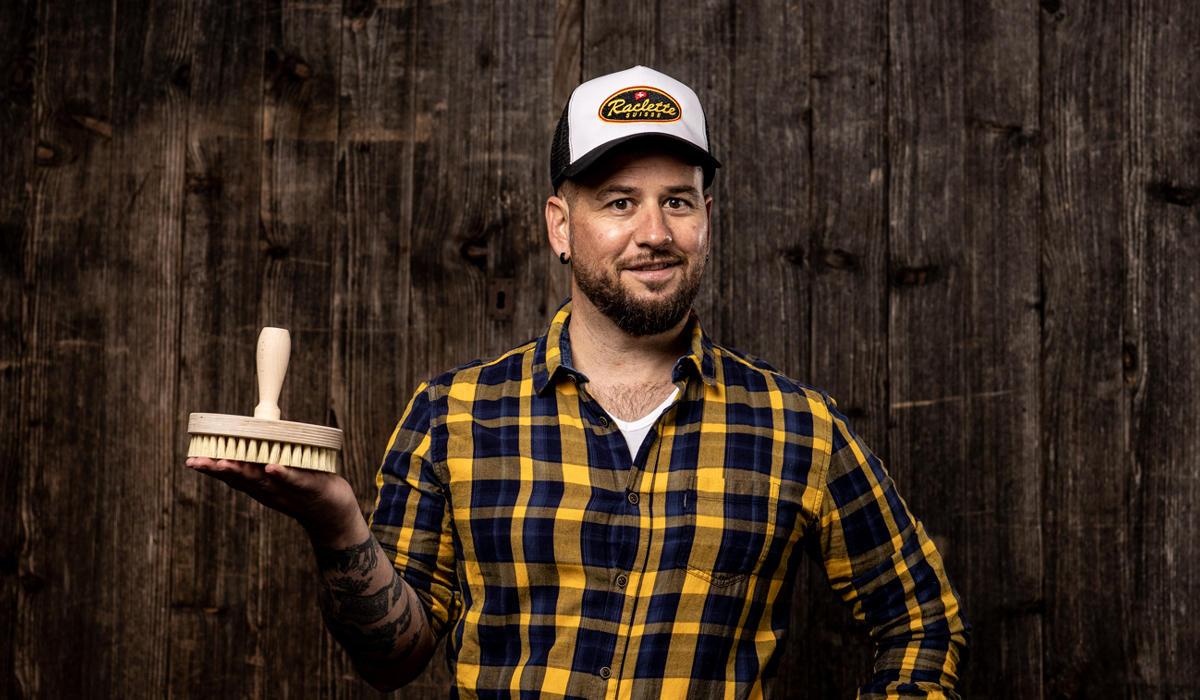
The raclette cheese goes into the cheese cellar, where it needs three to six months to ripen. During this time, it is turned several times a week, rubbed with the lubricating water, and tended to.
Read more about care and ripening here.
After the wellness bath, the raclette cheese goes into the wellness cellar. There it lies for 3 to 6 months at a pleasant 10° to 12°C until it is ripe.
It is nurtured and tended to several times a week during the entire ripening period. Each individual wheel of cheese is turned and rubbed with lubricating water. The younger cheeses are ripened first, then the older ones.
The lubricating water, also called rind lubricant, is a refined mixture of water, salt and selected bacteria. It helps to protect the cheese effectively and is partly responsible for the typical yellow rind, aroma and smell.
During these months in the cellar, all the lactose in the cheese is broken down, so the raclette cheese is lactose-free when it comes out of the cellar.
Once the raclette cheese has reached the desired maturity, it is thoroughly washed.
And then it is packaged and cut into portions or slices as large as you like.
See here how TRAUFFER breaks a sweat when it comes to car
See here how TRAUFFER assists with washing the cheese.
5. This raclette cheese has earned it.
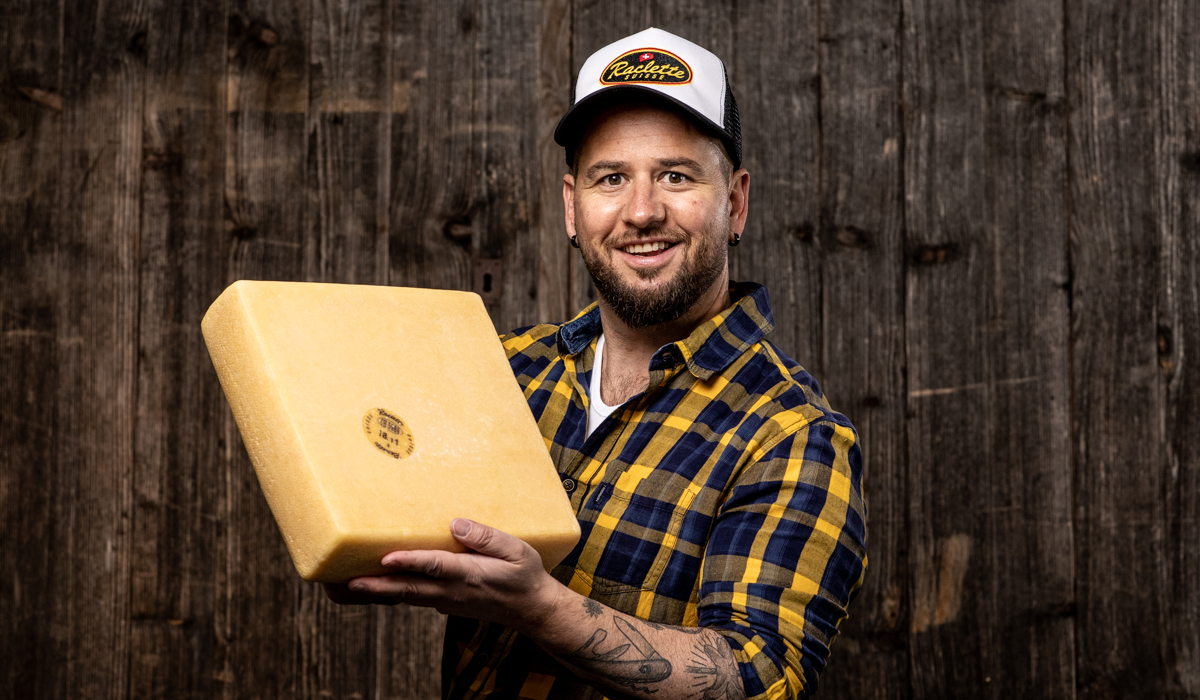
Only a raclette cheese with our seal of quality is a Raclette Suisse. Before it receives this distinction, it must pass stringent controls and tests. Only a natural cheese of the highest quality can do this.
Read more about our strict quality controls here.
Not every raclette cheese from Switzerland is automatically a Raclette Suisse. Because before it is allowed to call itself that, it is checked and controlled to ensure that it also meets our high quality standards. And only a naturally pure cheese of the highest quality can do that.
First of all, of course, it is the cheesemaker who carries out every single step of the production process with precision and a great deal of skill, checking everything meticulously again and again.
During the ripening process in the cellar, he regularly inspects and checks every single cheese. He examines the rind, tests the ripening, and assesses the firmness and the formation of holes. And he makes sure that the taste and aroma are just the way he wants them.
But all that is not enough for us.
Several times over the course of a year, the wheels produced are tested and analysed by members of the Raclette Suisse Association in collaboration with the Institute of Food Science in Bern. They check that only natural ingredients are used for processing. And each individual cheese wheel is examined again for melting behaviour and taste.
Only when a raclette cheese has passed all these checks and tests is it allowed to bear our seal of quality.
And only then does it reach you as a real Raclette Suisse at your table, where you sit in the convivial company of family and friends and perhaps wonder why this Raclette cheese tastes so incredibly good.
